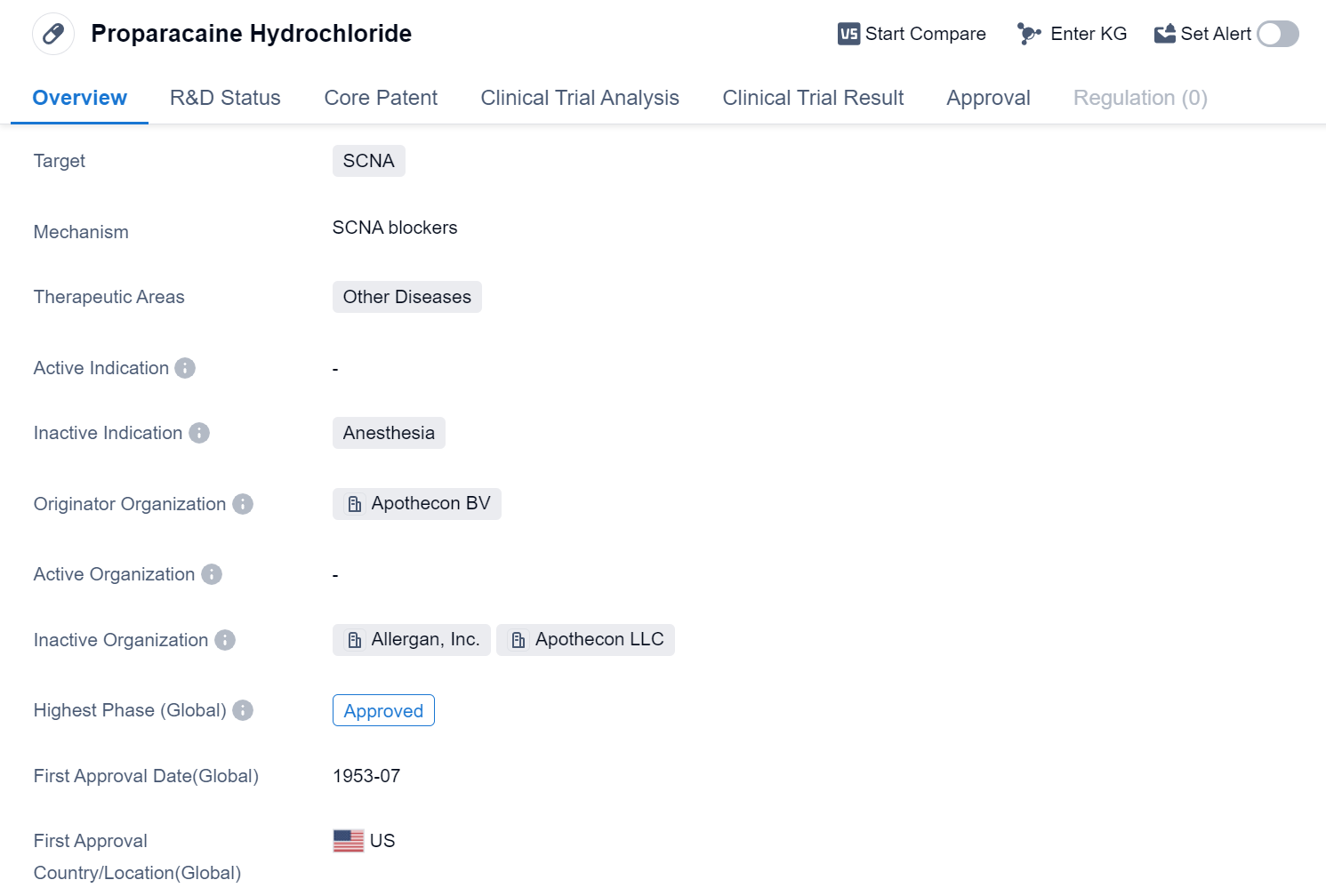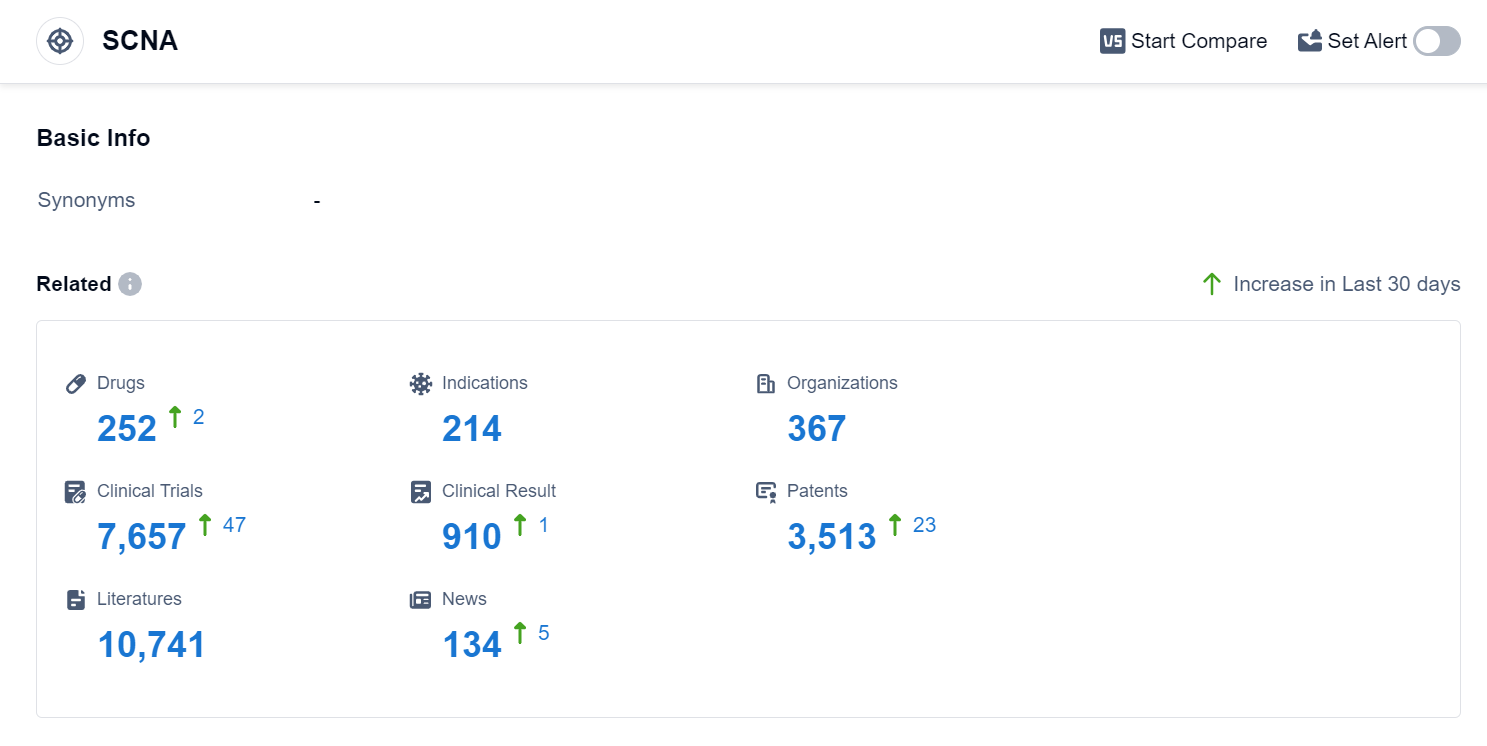Unleashing the Power of Proparacaine Hydrochloride: A Comprehensive Review on R&D Breakthroughs
Proparacaine Hydrochloride's R&D Progress
Proparacaine Hydrochloride is a small molecule drug used in the field of biomedicine. It targets SCNA and is primarily used in the treatment of other diseases. The drug was developed by Apothecon BV, an originator organization.
Proparacaine Hydrochloride has reached the highest phase of approval globally. It received its first approval in the United States in July 1953, making it a well-established drug with a long history of use.
As a small molecule drug, Proparacaine Hydrochloride is designed to interact with specific molecular targets in the body, in this case, SCNA. This target is likely associated with the therapeutic areas of other diseases, indicating that the drug may have a broad range of applications beyond specific diseases or conditions.
The approval of Proparacaine Hydrochloride in the global market highlights its potential for widespread use and availability. This suggests that the drug has been recognized as a valuable therapeutic option by regulatory authorities in multiple countries.
Given that Proparacaine Hydrochloride was first approved in 1953, it has a long history of use and may have established itself as a standard treatment option in the field of biomedicine.
👇Please click on the image below to directly access the latest data (R&D Status | Core Patent | Clinical Trial | Approval status in Global countries) of this drug.
Mechanism of Action for Proparacaine Hydrochloride: SCNA blockers
SCNA blockers are a type of drug that inhibit the activity of sodium channels in the body. Sodium channels are proteins found in cell membranes that play a crucial role in the transmission of electrical signals in nerve cells and muscle cells. By blocking these channels, SCNA blockers can modulate the excitability of neurons and muscles.
From a biomedical perspective, SCNA blockers are often used in the treatment of various conditions involving abnormal electrical activity, such as epilepsy, arrhythmias, and neuropathic pain. By reducing the excessive firing of neurons or abnormal electrical impulses in the heart, SCNA blockers can help restore normal function and alleviate symptoms.
It's important to note that SCNA blockers can have different mechanisms of action and can target specific types of sodium channels. For example, some SCNA blockers selectively block voltage-gated sodium channels, while others may have a broader spectrum of activity. The specific choice of SCNA blocker depends on the condition being treated and the desired therapeutic effect.
Overall, SCNA blockers are valuable pharmaceutical agents that can effectively modulate electrical signaling in the body and are widely used in the field of biomedicine to treat various disorders related to abnormal electrical activity.
Drug Target R&D Trends for Proparacaine Hydrochloride
According to Patsnap Synapse, as of 10 Sep 2023, there are a total of 252 SCNA drugs worldwide, from 367 organizations, covering 214 indications, and conducting 7657 clinical trials.
The analysis of the target SCNA reveals a competitive landscape with multiple companies actively developing treatments. Novartis AG and Pfizer Inc. are the leading companies in terms of drug development, with Novartis AG having the highest number of approved drugs and Pfizer Inc. having a diverse pipeline. The target SCNA has drugs approved for various indications, including Anesthesia, Arrhythmias, Cardiac, and Pain. Small molecule drugs dominate the drug types being developed, but there is also significant research on biosimilars, such as antibodies and monoclonal antibodies. China, the United States, and Japan are the countries leading in the development of treatments for the target SCNA, with China having the highest number of approved drugs. Overall, the target SCNA shows promising progress and potential for future advancements in the pharmaceutical industry.
👇Please click on the picture link below for free registration or log in directly if you have a freemium account, you can browse the latest research progress on drugs, indications, organizations, clinical trials, clinical results, and drug patents related to this target
Conclusion
In summary, Proparacaine Hydrochloride is a small molecule drug developed by Apothecon BV. It targets SCNA and is used in the treatment of other diseases. The drug has reached the highest phase of approval globally, with its first approval dating back to 1953 in the United States. Its long history of use and widespread approval suggest that it is a well-established and valuable therapeutic option in the pharmaceutical industry.






